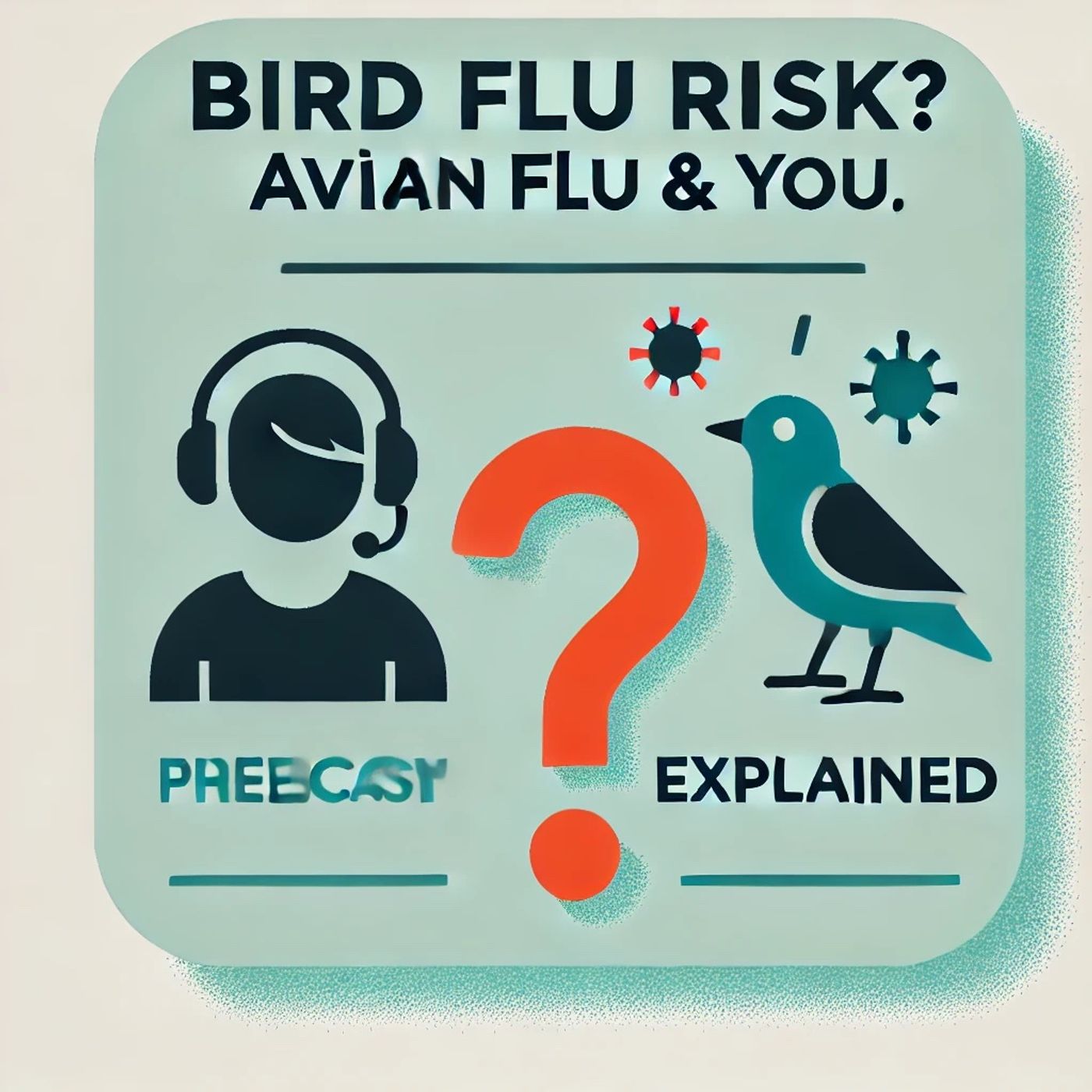Podcast Episode Details
Back to Podcast Episodes
Bird Flu 2025: Your Essential Guide to Risks, Prevention, and Staying Safe in Changing Viral Landscape
Bird Flu Risk? Avian Flu & You, Explained
Hi, it’s your personal risk check-in. In three minutes, we’ll help you gauge your own bird flu risk and decide what to do next—calm, clear, and practical.
First, the big picture: According to the World Health Organization, FAO, and WOAH’s April 2025 assessment, the overall public health risk from current H5 avian influenza viruses is low for the general public, and low to moderate for people with occupational exposure, depending on protections in place. The CDC’s February 2025 assessment echoes this: risk to the U.S. public is low, but can change if the virus evolves. Johns Hopkins Center for Health Security reported in July 2025 that U.S. detections in animals and people have declined, with no new U.S. human cases since February 2025, and wastewater signals minimal—suggesting low current risk, while noting surveillance gaps.
Your personalized risk comes down to exposure. The CDC says the main risk factor is direct contact with infected birds, dairy cattle, other animals, or contaminated environments and raw products like unpasteurized milk. Here’s how that breaks down:
By occupation:
- Higher risk: poultry and dairy workers; veterinarians; animal health responders; slaughter/processing workers handling live lactating dairy cattle; workers in live bird markets; wildlife rehab and zoo staff. A 2025 scoping review in Pathogens highlights elevated exposure along the poultry supply chain, from farms to markets and transport.
- Moderate risk: backyard flock owners, hunters of waterfowl, agricultural and small-scale poultry workers.
- Low risk: most other jobs with no animal exposure.
By location:
- Higher risk if you live or work near affected poultry or dairy operations, or visit live bird markets or areas with sick/dead wild birds.
- Lower risk in urban settings without animal exposure and where milk is pasteurized and poultry is well-cooked.
By age and health:
- Severe outcomes are more likely in older adults and people with underlying conditions or delayed care, per CDC. Infants and young children have had lower risk to date. Immunocompromising conditions raise risk from any respiratory infection.
Risk calculator, narrated:
- Scenario A: You work on a dairy farm with lactating cows, sometimes handle sick animals, and PPE is inconsistent. Your risk is low to moderate today, higher during active outbreaks on-site. Wear fit-tested respirators, eye protection, gloves, and coveralls; avoid raw milk; wash hands; and enroll in employer testing and vaccination programs if offered.
- Scenario B: You’re a suburban parent who buys pasteurized milk and cooks chicken thoroughly. No animal exposure. Your risk is low. Keep routine hygiene and food safety; no extra measures needed.
- Scenario C: You keep a small backyard flock and occasionally clean coops. Your risk is low, rising temporarily if birds are ill or die unexpectedly. Wear gloves and a mask when cleaning, avoid touching your face, and report sudden bird deaths to local agriculture authorities.
- Scenario D: You’re 72 with COPD, living near poultry farms but no direct contact. Your exposure is low, but your susceptibility to severe disease is higher. Keep distance from sick/dead birds, avoid raw dairy, keep vaccinations updated (seasonal flu, pneumonia), and seek care early if you develop fever, cough, or conjunctivitis after any animal exposure.
Guidance for high-risk individuals:
- Use layered protection at work: fit-tested N95 or better, eye protection, gloves, dedicated clothing, hand hygiene, and avoid touching eyes and nose.
- Do not consume raw milk or undercooked poultry; pasteurization and proper cooking inactivate influenza viruses, per CDC.
- Enroll in occupational health monitoring and get tested promptly for symptoms after exposure.
- Employers should implement one-health s
Published on 1 week, 5 days ago